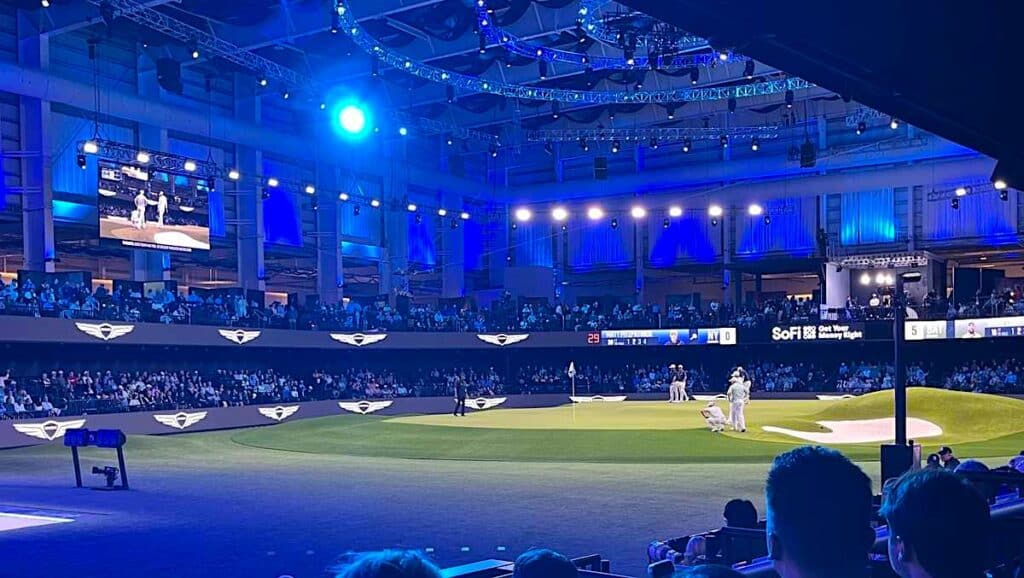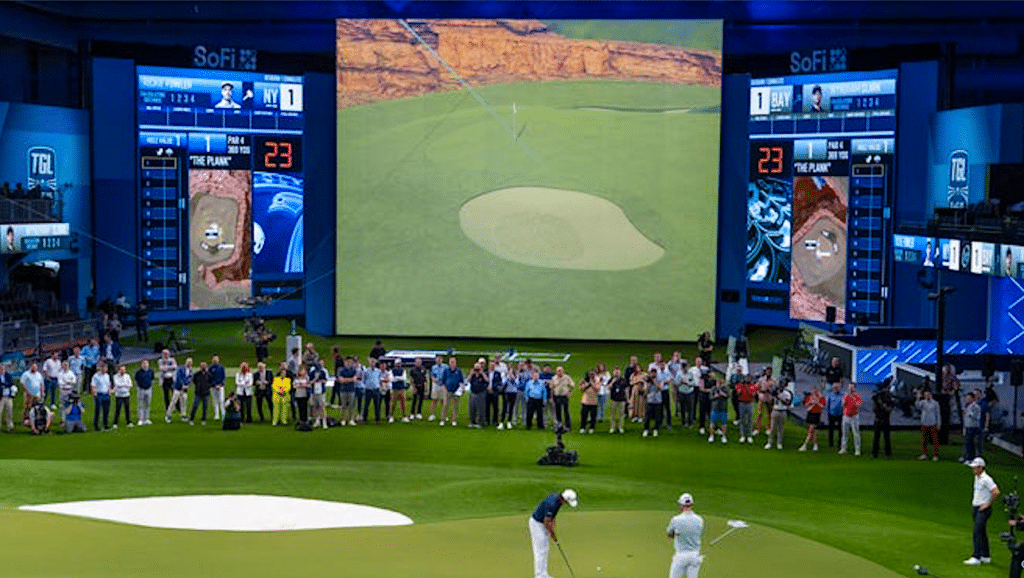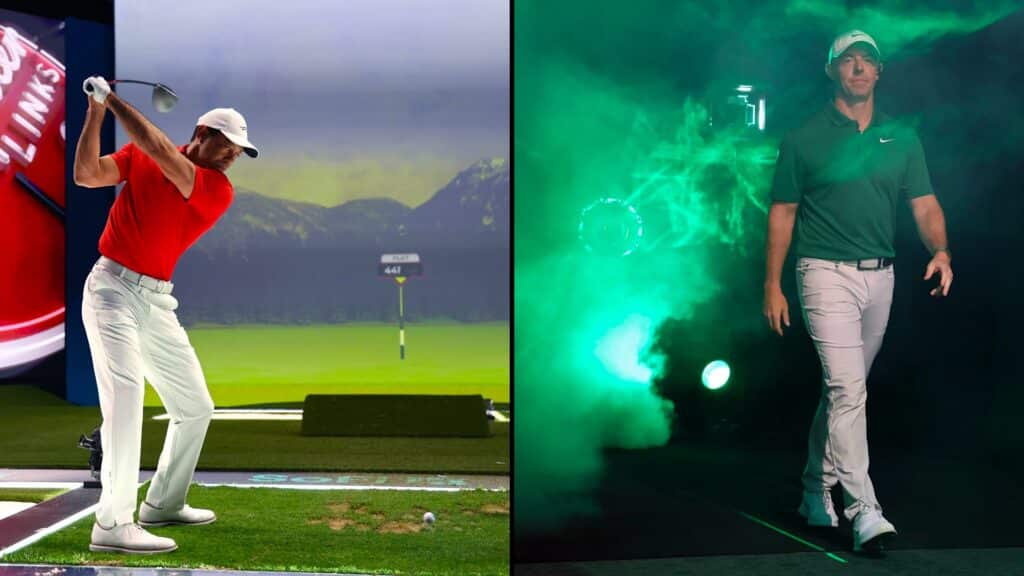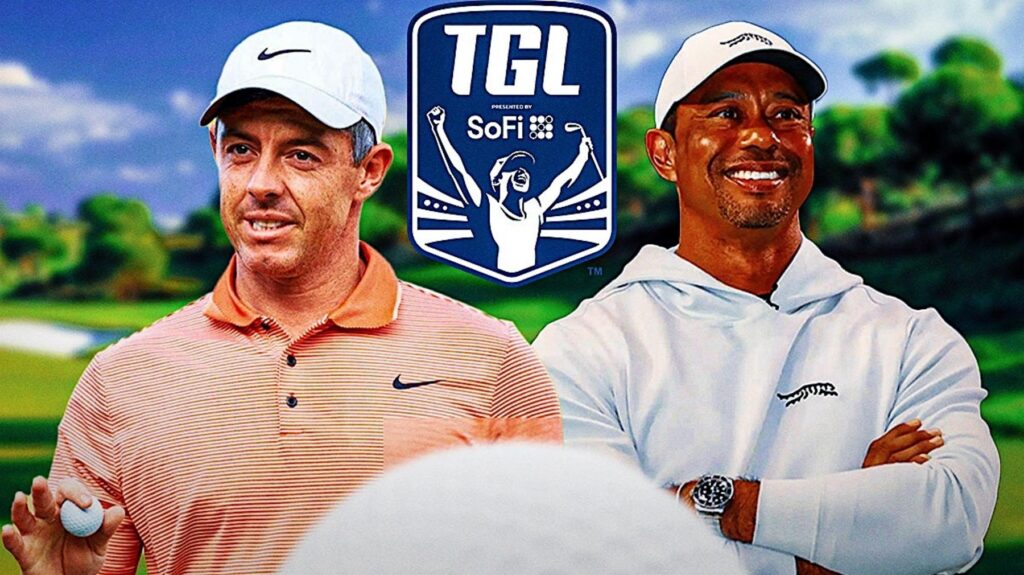The TGL Golf League
Indoor Golf and Realty televison
B y Jack Ross
As I write, my television is tuned to the third round of the AT&T Pebble Beach Pro-Am. Rory McIlroy is at the top of an illustrious leaderboard, but it’s no picnic this afternoon on the Monterey Peninsula. Cold temperatures, rain, and wind buffet the players. Caddies are struggling to keep clubs dry. Tom Kim is wearing a knit hat. This is my kind of golf. Top players battling tough conditions on a renowned course.
But after the tournament, McIlroy will board a private jet so that he can get to the SoFi Center Dome in Palm Beach, Florida in time to compete with his Boston Common teammates in a TGL match on Tuesday night. This will be a quite different experience than Pebble Beach: indoor simulator golf featuring an IMAX-size screen that is 64 feet wide and 53 feet tall, along with a 41-yard wide, rotating green complex for shots within 50 yards. 1,500 fans will watch in the luxury hospitality of the So Fi Facility, while perhaps a million more (on a good night) will tune in on ESPN.
As I watch McIlroy getting drenched at Pebble Beach, I wonder if he’d rather be playing in the TGL event where he will be dry and warm, bantering with his teammates, powering tee shots into the mammoth screen and reading putts on the synthetic grass. Trying to lead his team to a victory over the L.A. team anchored by Colin Morikawa and Justin Rose. More importantly, how many traditional golf fans will have any interest in the TGL match?
TGL, the indoor golf league founded by Tiger Woods and McIlroy, debuted in January with much fanfare. Its six teams are each composed of four Tour players. Along with McIlroy, the Boston Common team (owned by Fenway Sports Group) is rounded out by Keegan Bradley, Adam Scott, and Hideki Matsuyama. Other notable TGL participants include Justin Thomas, Patrick Cantley, Tom Kim, Max Homa, Billy Horschel, Sahith Theegala, Tommy Fleetwood, Xander Schauffele, Ricke Fowler, Matt Fitzpatrick, and Shane Lowry.
TGL is all about technology. A state-of-the-art simulator. A rotating green which can vary the undulations, contours, and slope from hole to hole through motorized actuators embedded beneath the surface. (Unlike normal simulator golf, the players will hit full shots from real turf and take divots.) Cameras which will catch every angle. “This isn’t real grass, but it’s the closest thing we can get to it, and I think it reacts very similar in the sense of the shots you can hit,” Horschel said of the short-game area.
TGL has even introduced a shot clock to keep the matches within the 2-hour television limit. Players have 40 seconds to play a shot. (In a recent match, Woods was penalized for a shot clock violation.) The matches consist of 15 holes: nine holes with three players in an alternate shot format, and six holes of singles matches. The holes were custom designed by several prominent design groups and feature a variety of settings, including links, canyons, coastline, desert, and even a volcano. All the players wear microphones, with a goal of capturing some good-natured trash talk.
What is the core TGL concept? McIlroy explained at the start of the season: “It’s golf, but it’s reimagined, sort of trying to take golf into the 21st century. We have teams, obviously there’s a lot of technology involved, trying to bring it to the digital era. A lot of things we have taken from other sports, like a shot clock, a timeout. We’re trying to appeal to that bigger sports audience out there.”
After a month of competition, the question remains: will TGL sell, and to what type of fans? The ESPN telecasts have drawn respectable ratings — the highest, naturally, when Woods competes. His debut drew over 1 million viewers, which nearly doubled the ratings for a Duke basketball game the same evening. Although ratings tapered off somewhat the following two weeks, a recent match between Boston Common and Jupiter Links Golf Club, featuring a head-to-head competition between Woods and McIlroy, averaged 864,000 viewers. TGL is tracking 33% better than college basketball. Not too shabby.
Who is watching? As expected, TGL is drawing a younger audience than PGA Tour events, and fewer women viewers. But feedback is positive. Fans like the fast pace, the technology, and the banter among the players. One fan commented: “This was better than any PGA Tour event I’ve seen in a year.”
It’s too early to predict whether TGL is here to stay. There is a novelty factor at work. Interest could fade. The stars and the technology might not be enough to sustain interest. A big factor is whether fans will buy into the team competition. Is the league building loyalty to teams? Is this sports or entertainment? Time will tell. I’m old school, but I think I’d rather watch them play in the rain at Pebble Beach.





